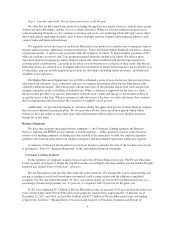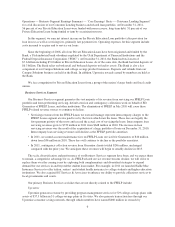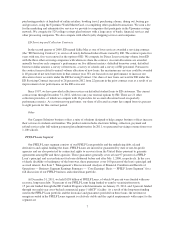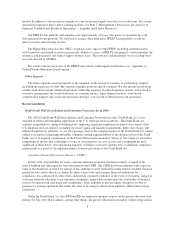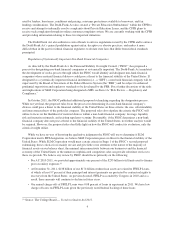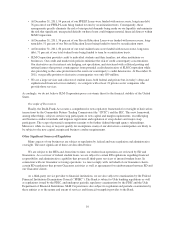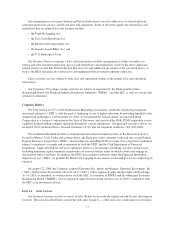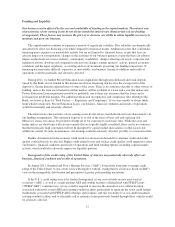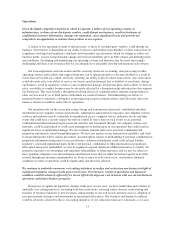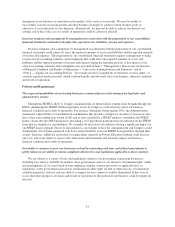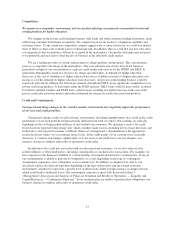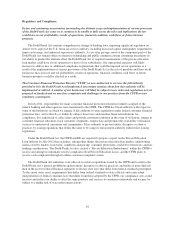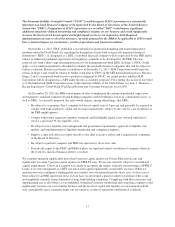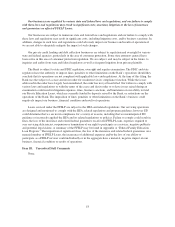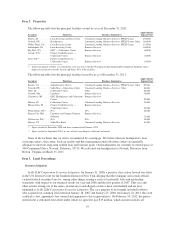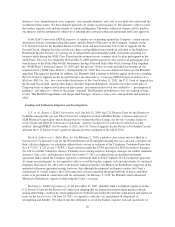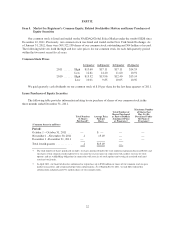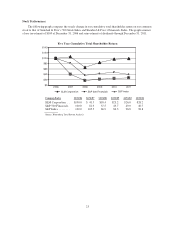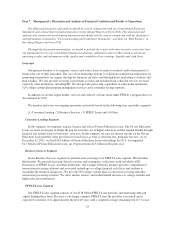Sallie Mae 2011 Annual Report Download - page 17
Download and view the complete annual report
Please find page 17 of the 2011 Sallie Mae annual report below. You can navigate through the pages in the report by either clicking on the pages listed below, or by using the keyword search tool below to find specific information within the annual report.Competition.
We operate in a competitive environment, and our product offerings are primarily concentrated in loan and
savings products for higher education.
We compete in the private credit lending business with banks and other consumer lending institutions, many
with strong consumer brand name recognition. We compete based on our products, origination capability and
customer service. To the extent our competitors compete aggressively or more effectively, we could lose market
share to them or subject our existing loans to refinancing risk. In addition, there is a risk that any new education
or loan products that we introduce will not be accepted in the marketplace. Our product offerings may not prove
to be profitable and may fail to offset the loss of business in the education credit market.
We are a leading provider of saving- and paying-for-college products and programs. This concentration
gives us a competitive advantage in the marketplace. This concentration also creates risks in our business,
particularly in light of our concentration as a private credit lender and servicer for the FFELP and DSLP. If
population demographics result in a decrease in college-age individuals, if demand for higher education
decreases, if the cost of attendance of higher education decreases, if public resistance to higher education costs
increases, or if the demand for higher education loans decreases, our private credit lending business could be
negatively affected. In addition, the federal government, through the DSLP, poses significant competition to our
private credit loan products. If loan limits under the DSLP increase, DSLP loans could be more widely available
to students and their families and DSLP loans could increase, resulting in a further decrease in the size of the
private credit education loan market and reduced demand for our private credit education loan products.
Credit and Counterparty.
Unexpected and sharp changes in the overall economic environment may negatively impact the performance
of our loan and credit portfolios.
Unexpected changes in the overall economic environment, including unemployment, may result in the credit
performance of our loan portfolio being materially different from what we expect. Our earnings are critically
dependent on the evolving creditworthiness of our student loan customers. We maintain a reserve for credit
losses based on expected future charge-offs which considers many factors, including levels of past due loans and
forbearances and expected economic conditions. However, management’s determination of the appropriate
reserve level may under- or over-estimate future losses. If the credit quality of our customer base materially
decreases, if a market risk changes significantly, or if our reserves for credit losses are not adequate, our
business, financial condition and results of operations could suffer.
In addition to the credit risk associated with our education loan customers, we are also subject to the
creditworthiness of other third parties, including counterparties to our derivative transactions. For example, we
have exposure to the financial condition of various lending, investment and derivative counterparties. If any of
our counterparties is unable to perform its obligations, we could, depending on the type of counterparty
arrangement, experience a loss of liquidity or an economic loss. In addition, we might not be able to cost
effectively replace the derivative position depending on the type of derivative and the current economic
environment, and thus be exposed to a greater level of interest rate and/or foreign currency exchange rate risk
which could lead to additional losses. Our counterparty exposure is more fully discussed in Item 7
“Management’s Discussion and Analysis of Financial Condition and Results of Operations — Liquidity and
Capital Resources — Counterparty Exposure.” If our counterparties are unable to perform their obligations, our
business, financial condition and results of operations could suffer.
15


